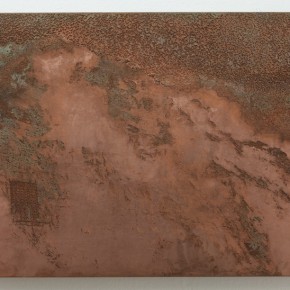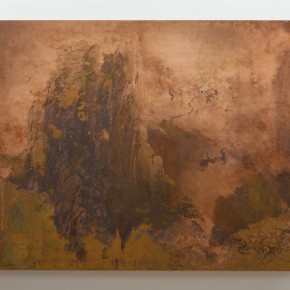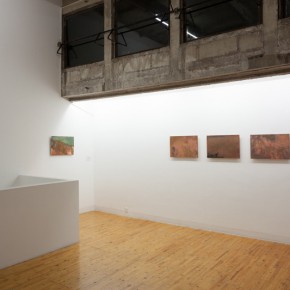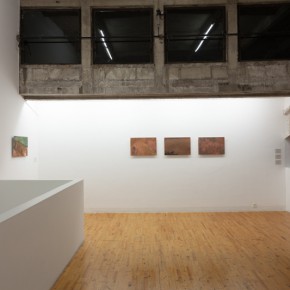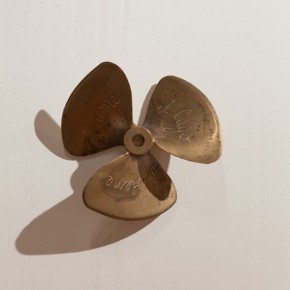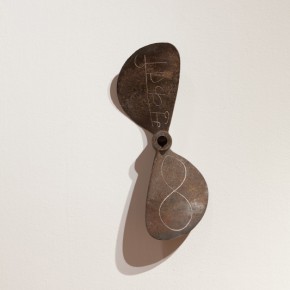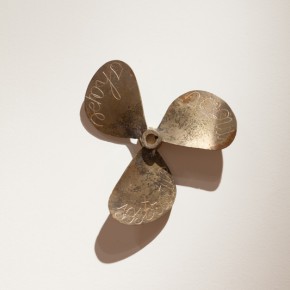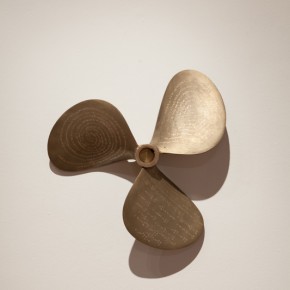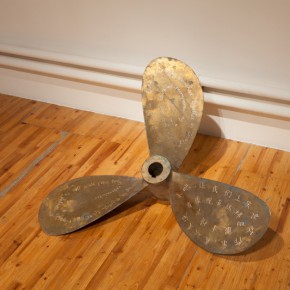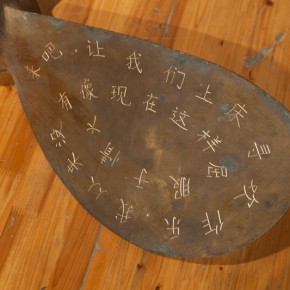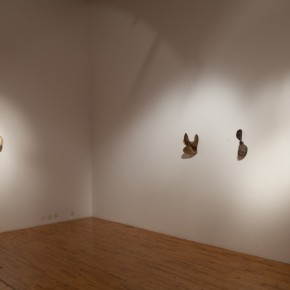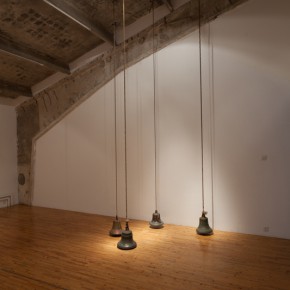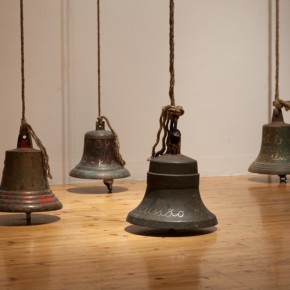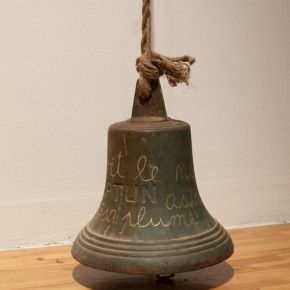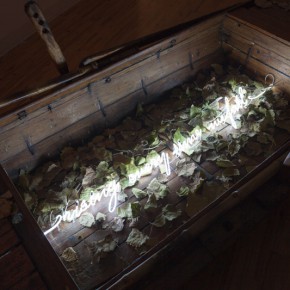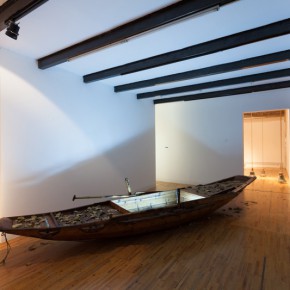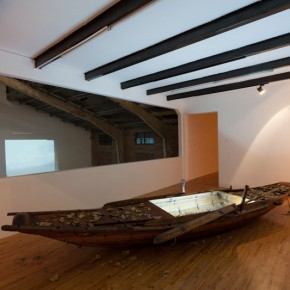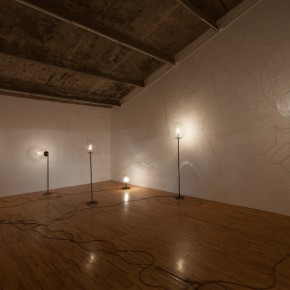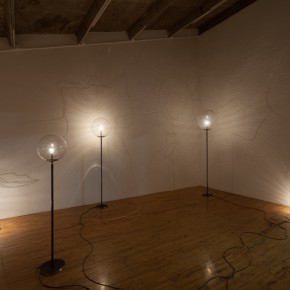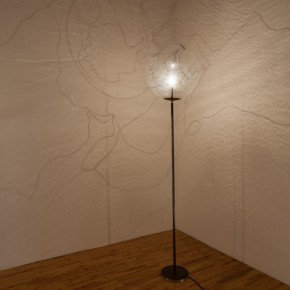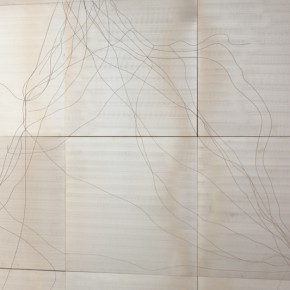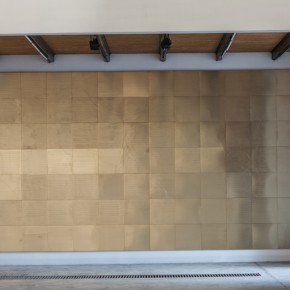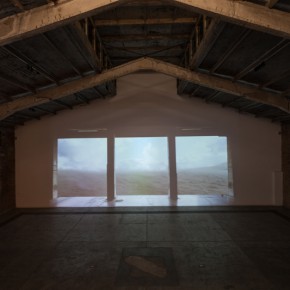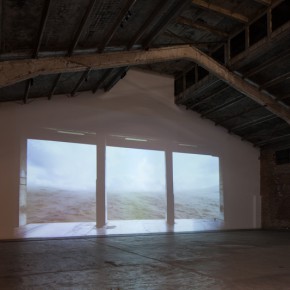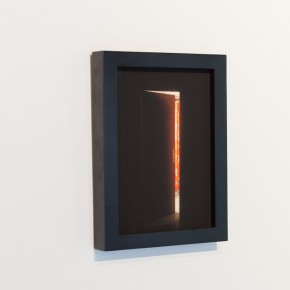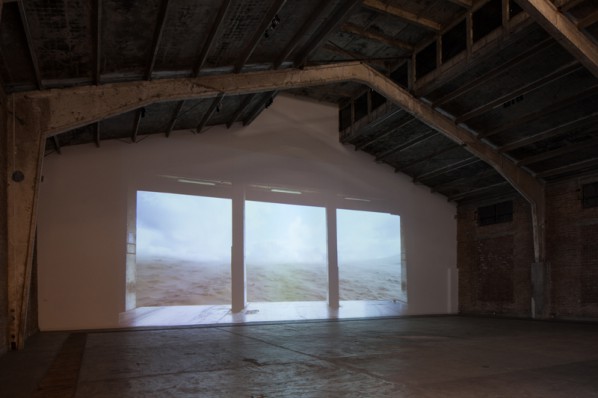
On December 14, 2013, Giovanni Ozzola’s solo exhibition “LA THÉORIE DES COMÈTES” was held in Beijing Galleria Continua, which is the first solo exhibition of the artist in Galleria Continua Beijing. It showcases Giovanni Ozzola’s photography, installations, copperplate etchings and videos. The exhibition offers the audience a soothing visual experience, which is like a cognitive sensory experience. It will remain on view until April 20, 2014.
Composed of 98 luminous golden copper plates, the huge work “Scar” is located at the entrance of the exhibition hall, where the artist Ozzola applies ancient engraving technology to embed several routes of famous navigators in history into the copper plates. These wavy routes are lacking in any embellishment, wandering in the endless sea, missing landmarks, as if being trapped in a haze and darkness. Such as navigators Columbus, Vasco da Gama, Magellan, Zheng He, as well as astronomers, geography specialists, because they yearned for the unknown, in addition to being driven by the self spirit of adventure, so they faced the fear and resolutely drove to “nothingness”.
In the main hall, a three-screen video “Garage - Desert – Soundscape” covers most of the wall. An old jute rope is hanging on the wall, serving as a symbol that is representative of the infinite, showcasing the cycle of life, death and rebirth.
“At the coldest time of the year, all plants are dying except for cypresses and pines (a metaphor that some people persevere and are able to endure hardships, maintaining the initial idea)” is presented on the second floor of the exhibition hall, it is made up of an abandoned old ship and the lighting is inside the ship. The neon lights inside the ship showcase a sentence - “At the coldest time of the year, all plants are dying except for cypresses and pines (a metaphor that some people can persevere and are able to endure hardships, maintaining the initial idea)”.
In “Propeller”, the perfect shape of the propeller is a symbol of the movement, continuity and energy. The ancient ship propellers experienced tsunamis and shipwrecks, and were rich in experience, the surfaces of the propellers are engraved with words of philosophy, science and religious thought, to defend the only truth hidden under various concepts such as continuation, change, material, as well as the erotic and sensual: the wheel of rebirth, earthly life, material world are all full of suffering and torture.
The “Light – History – Pathetique” showcases some hanging transparent glass spheres which seem to be distant planets, lighting every corner of the room, the traces which are reflected on the ceiling and the ground are as if crossing the ocean, which once again emphasizes how humans must overcome insecurity, facing the fear, suffering and changing situation, maintaining confidence in the face of frustration. Finding our position, and then finding a new knowledge of ourselves.
The bell of the “Dust – Bell” is always beating the same tone… it is the bell for survivors, diligent women work hard in the old ship, whose rough and thick skins are also engraved with the same words, and it is imprinted in the memory of Ozzola, so that it is impossible for him to forget it, and it repeats itself in different periods of his life, and brings new meanings.
The top of the gallery serves as the end of the visiting route of the exhibition, showcasing works of etching on copper including “Mount Fuji”, “Mount Sneffels”, “Mount Huangshan” and “Mount Songshan”, returning the audience to the light once again, while they are surrounded by the peaks of the holy mountains. In all landscapes, mountains are magnificent and majestically presented, and even many ethnic groups worship grand mountains, giving them religious and cosmic significance. Not only does it demonstrate that people constantly explore the symbol of the center of the world, but it also shows that people endlessly yearn for the aesthetic penances of harvesting the profound experiences and enlightenment.
Photo: Eric, Journalist: Ye Yuanfeng, translated by Chen Peihua and edited by Sue/CAFA ART INFO




